Recent Articles
Popular Makes
Body Types
2019 Volkswagen Golf vs. 2019 Honda Civic: Which is Best?
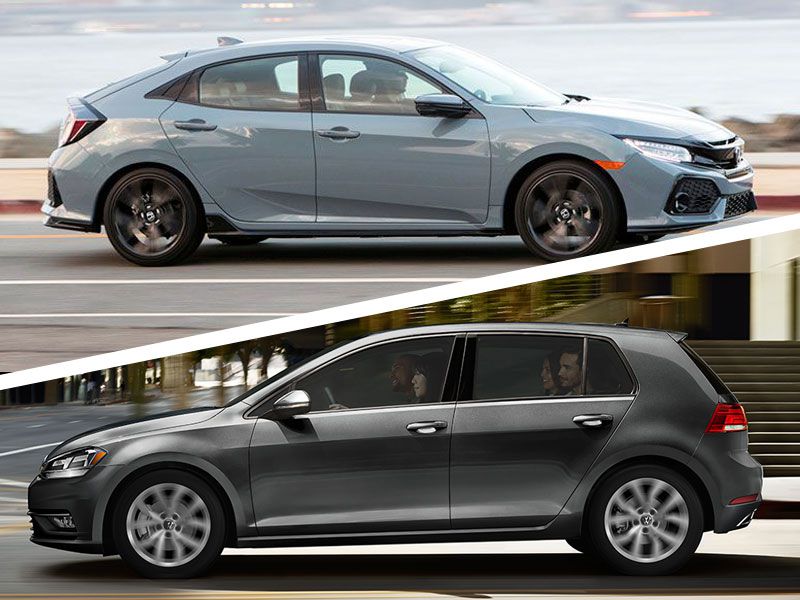
2019 VW Golf vs Honda Civic1
Over the last 50 years, Americans have purchased millions upon millions of compact hatchbacks. Just about everyone drove some kind of small car when they were young, and many continue to choose a smaller, more economical car throughout their lives.
Two of the most enduring models in the hatchback market are the Honda Civic and the Volkswagen Golf. The Civic has been sold in America since 1972, and the Golf (or Rabbit) since 1974. Over the years, both brands have gained loyal followings and spawned high-performance models in addition to the basic economy trims. If you’re considering a new compact hatchback for 2019, here’s our comparative evaluation of these two market leaders. Because the Golf is available only as a hatchback while the Civic is available as a hatch, sedan, or coupe, we limited the comparison to the hatchback models only.
Trims and Pricing
The 2019 Honda Civic is available in five distinct trim levels, ranging from the most basic LX edition starting at $21,450, to the top Sport Touring model at $28,750. Sitting well above the standard range of Civic Hatchbacks, the 2019 Honda Civic Type R high-performance hatchback with 306 hp is available starting at $35,700.
The 2019 Volkswagen Golf is much simpler with only two trims from which to choose, but with additional sport editions above the basic vehicle spec. The most basic Golf is the S trim, starting at $21,845, followed by the SE upgrade trim at $24,145. Above the standard range, VW offers the high-performance 2019 Golf GTI in four trim levels, ranging from $27,595 to $35,995. The top-of-the-line 2019 Volkswagen Golf R comes with all-wheel drive and 288 hp for $40,395. All Golf models feature a hatch.
Volkswagen Golf
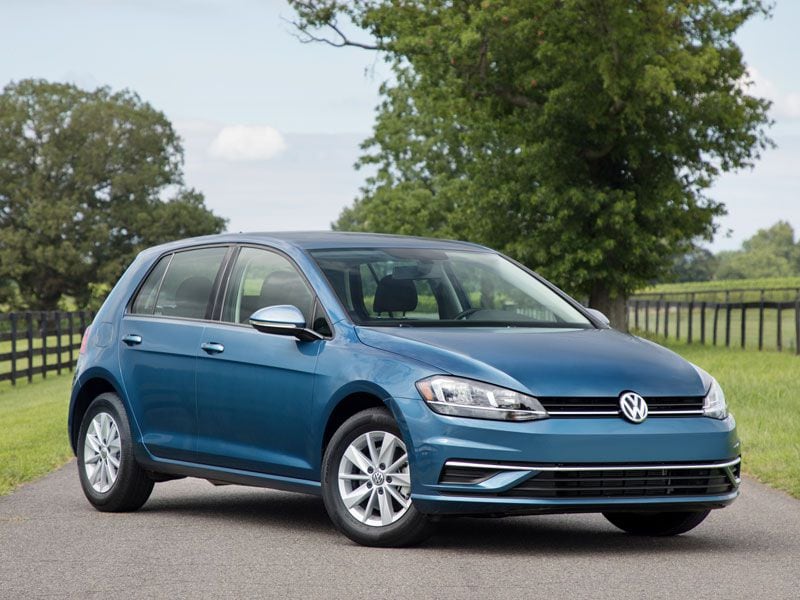
Photo by Volkswagen
Exterior Styling
Beauty is in the eye of the beholder, but Honda and VW present you with a clear choice. The Civic follows Honda’s current design language, with a long 106.3-inch wheelbase and overall length of 177.9 inches. The VW is more compact with a 103.8-inch wheelbase and overall length of 167.5 inches; more than 10 inches shorter than the Civic.
VW’s exterior styling is smoother and more traditional than the Honda. Honda’s bold and unique front grille and bumper design have been controversial among buyers, while VW’s understated design is more conservative. When it comes to exterior design, the Honda look may make or break a buying decision, while the VW is unlikely to evoke such a strong response.
Tie
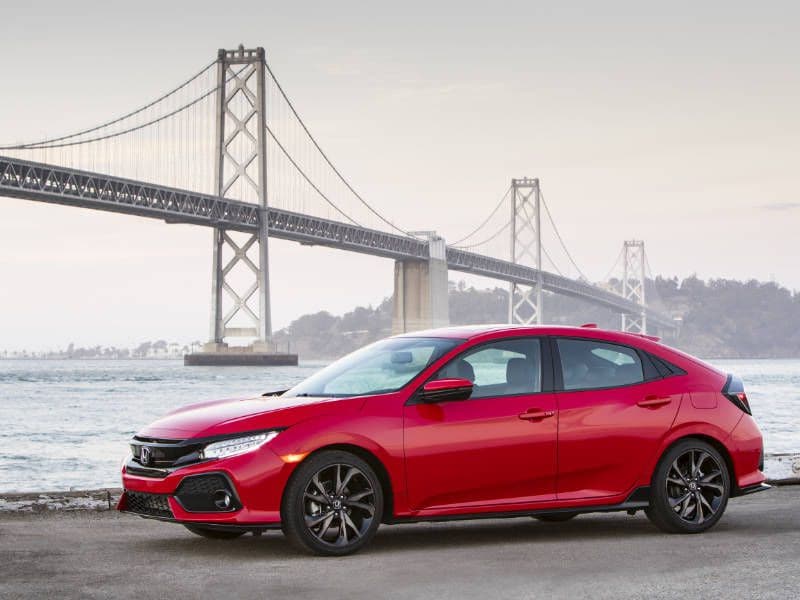
Photo by Honda
Interior Comfort
In the full range of trims, both the Honda and the Volkswagen offer every comfort feature. Both start at the base trim with cloth seats. Leather seating surfaces are available on top trims. Heated seats come in at the SE trim level on the VW and the mid-grade EX trim on the Honda.
When it comes to rear seat passengers, the Honda offers 36 inches of rear legroom, while the VW has almost the same at 35.6 inches. The Honda offers 25.7 cubic feet of cargo space behind the rear seats, while the VW offers 22.8 cubic feet. However, that turns around when you fold the rear seats. The VW offers 52.7 cubic feet of total cargo capacity to 46.2 cubic feet in the Honda.
Honda Civic
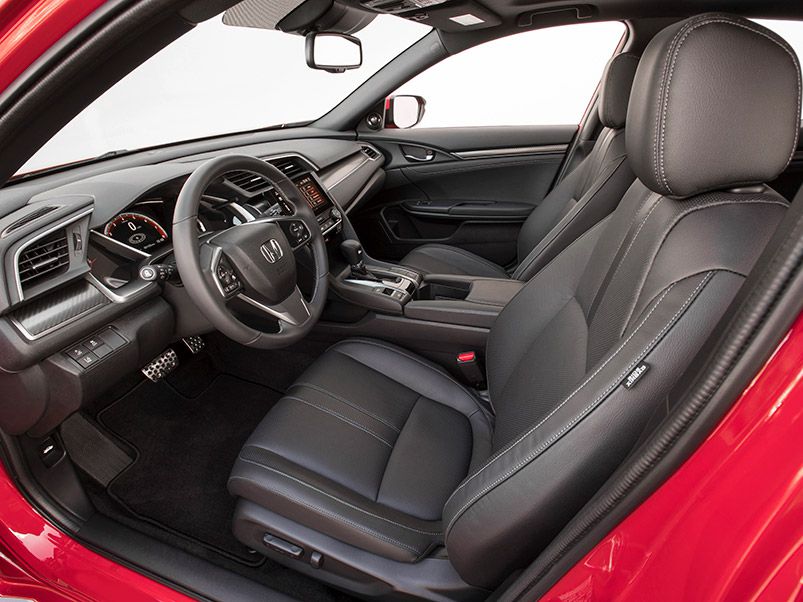
Photo by Honda
Engine and Transmission Options
The standard Volkswagen Golf engine is a 1.4-liter turbocharged four-cylinder rated at 147 hp. VW offers the Golf with a standard 6-speed manual transmission, or an 8-speed Tiptronic automatic for $1,100 more. VW fuel economy is EPA-rated at 29 mpg city and 37 mpg highway, regardless of transmission choice.
Honda’s standard engine is a 1.5-liter turbocharged four-cylinder, good for 174 hp (or 180 hp in the Sport and Sport Touring trims). In most trims, the Civic is available only with a continuously variable transmission, but a 6-speed manual is standard on the Sport trim. The EPA rates the Honda Civic at 31 mpg city and 40 mpg highway with the CVT, or at 28 mpg city and 38 mpg highway with the manual.
Honda Civic
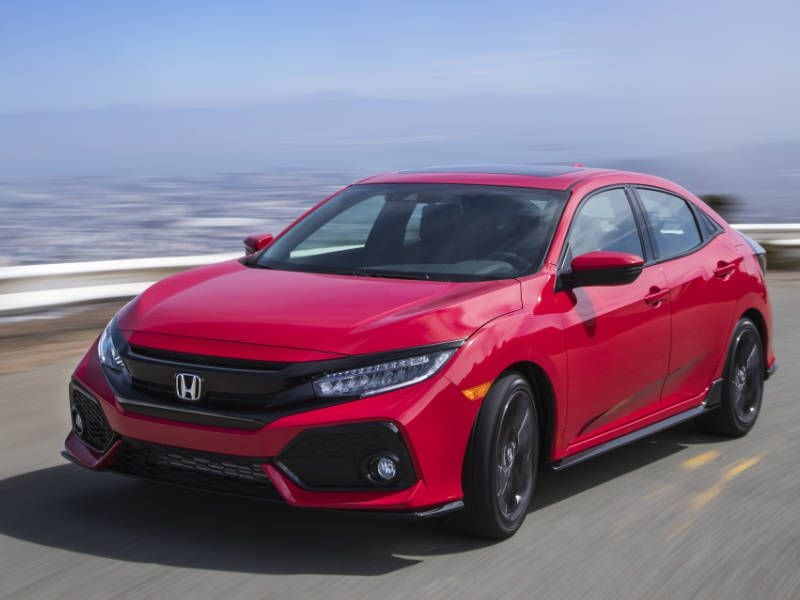
Photo by Honda
Warranty Coverage
Volkswagen offers one of the best warranties in the industry, backing the Golf from bumper to bumper for six years or 72,000 miles. The VW warranty is transferable, so buying a late-model used Golf means you’re still covered, and if you sell your Golf after a few years, that warranty carries powerful resale value.
Honda covers the Civic with a three-year or 36,000-mile general warranty, and a five-year or 60,000-mile warranty on powertrain components. The Civic also is backed for five years and unlimited miles against rust and corrosion.
Volkswagen Golf
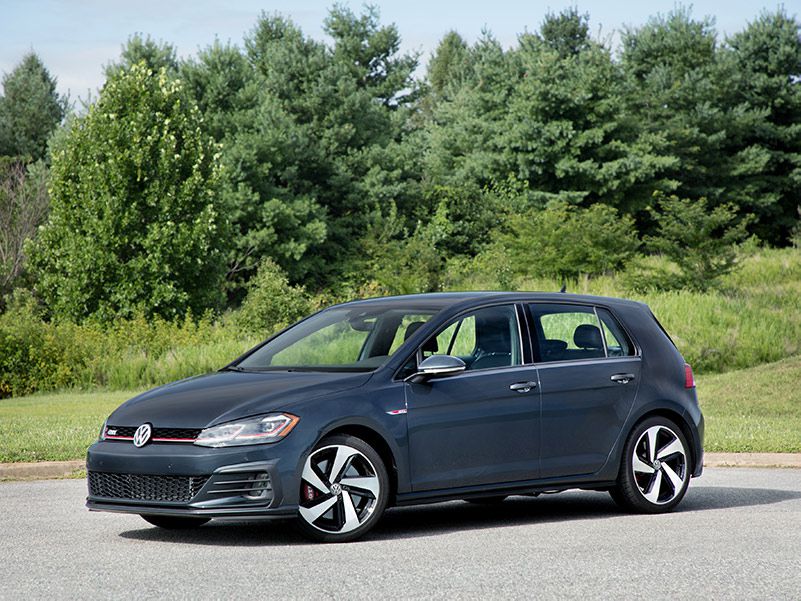
Photo by Volkswagen
Dashboard Tech
At the base LX trim level, the Honda Civic provides a 5-inch display screen with Honda’s multi-angle backup camera. Drivers can choose a normal rear-view, downward-looking, or a wide-angle view. At the mid-range EX trim level, Honda buyers get a larger 7-inch touchscreen display with support for Android Auto and Apple CarPlay. The top Sport Touring trim features on-board navigation.
Volkswagen provides the base Golf with a 6.5-inch touchscreen system and a rear-view camera. At the SE trim level, the screen grows to 8 inches and gains voice recognition. Android Auto and Apple CarPlay are supported on both screens through VW’s Car-Net App-Connect.
Volkswagen Golf
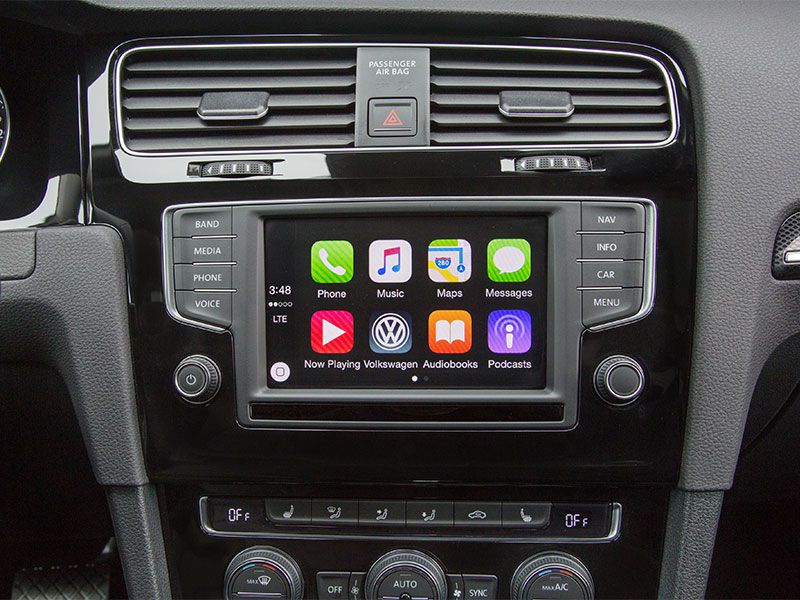
Photo by Volkswagen
Driving Dynamics
The most distinct difference between the Honda Civic and the Volkswagen Golf comes when you get behind the wheel. The Golf drives like a sport-oriented hatchback, while the Civic delivers a smoother ride, but less responsive steering. True sport hatch options start with the mid-priced Golf GTI on the VW side, but to get comparable performance, Honda buyers need to shift away from the hatchback to the Civic Si Coupe.
One big difference is the transmission. The Golf makes more use of the manual transmission option. But the difference is even more stark between the crisp Tiptronic automatic available with the VW, and the somewhat rubbery continuously variable unit in the Honda. Perceived performance in the basic VW greatly exceeds perceived performance in the base Honda, even allowing for the Honda’s greater horsepower.
Volkswagen Golf
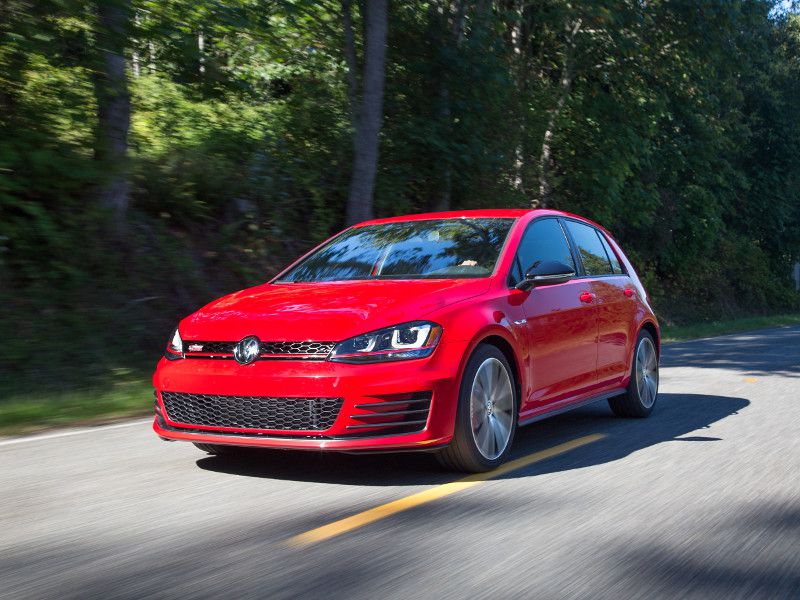
Photo by Volkswagen
Advanced Safety and Driver Assistance Equipment
Virtually any vehicle now offers advanced safety equipment, but most keep them at the top trim levels, or sell the best safety and driver assistance features in extra-cost option packages. That’s not the case with the Honda or the VW, however. The base trims of both vehicles come with an impressive array of features.
Every 2019 Honda Civic comes with adaptive cruise control, lane keeping assistance, collision and road departure mitigation, forward collision warning, braking assistance, and LED Running lights. Volkswagen offers autonomous emergency braking with pedestrian monitoring, blind spot monitoring, rear traffic alert, and intelligent crash response on every 2019 Golf.
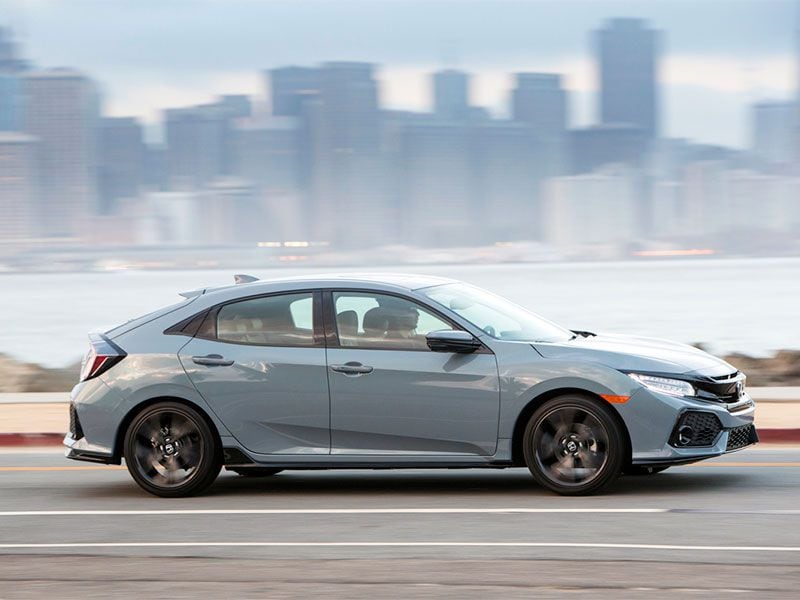
Photo by Honda
Premium Performance Versions
For most of this comparison, the focus has been on the base trims that most people will buy. However, both the Civic and the Golf have an extensive history of performance models that have inspired generations of enthusiasts. Honda’s entry in the hot hatch market is the 2019 Civic Type R, which boasts 306 hp from a 2.0-liter turbocharged engine. A 6-speed manual gearbox delivers that power to the front wheels. The Civic Type R retails for $35,700.
The Volkswagen R has one thing the Civic doesn’t - all-wheel drive. The 2.0-liter turbocharged engine produces 292 hp and passes that power to all four wheels through a 6-speed manual or 7-speed DSG twin-clutch transmission. The Golf R retails for $40,395. Both the Golf R and Civic Type R come with adaptive suspension and upgraded brakes to complete the performance package.
Tie
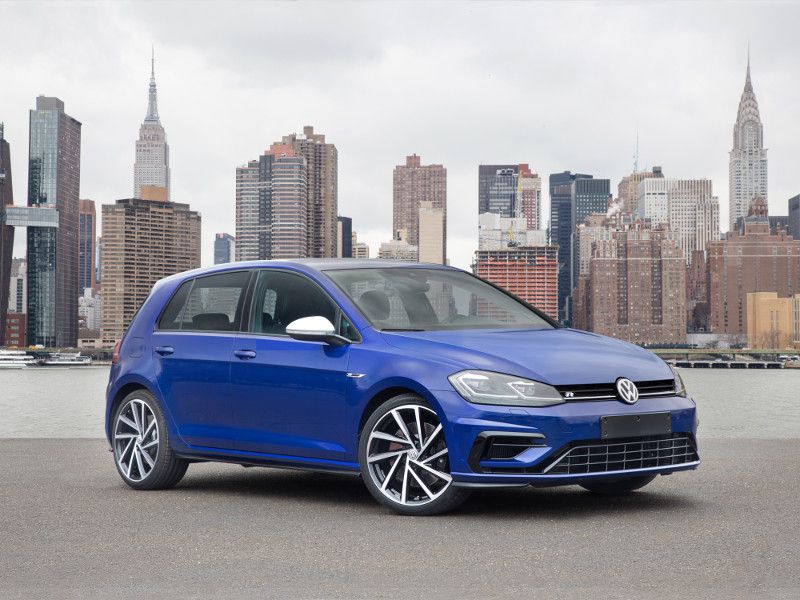
Photo by Volkswagen
The Winner is…
By the numbers, the Golf wins with four points to the Civic’s three. We found the Golf to be more fun to drive, with better dashboard tech, and better trim level choices throughout its range. The VW warranty also is a powerful reason to buy the Golf.
The Civic, on the other hand, excels in standard advanced safety equipment, including adaptive cruise control. The Civic also offers better fuel economy and more horsepower, at least in theory. But with two categories that are just too close to call, including the performance model options and the overall appearance, there’s a very good case to make for buying the Honda. It all comes down to your personal preference.
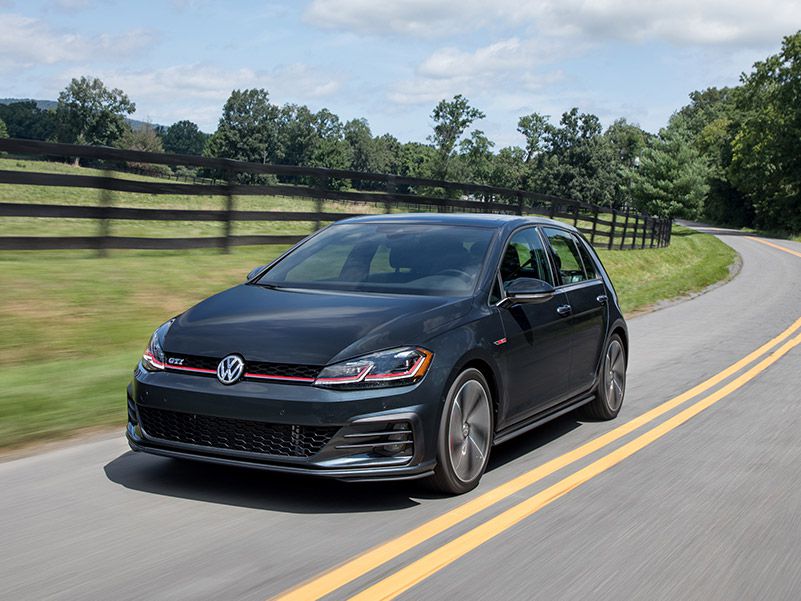
Photo by Volkswagen